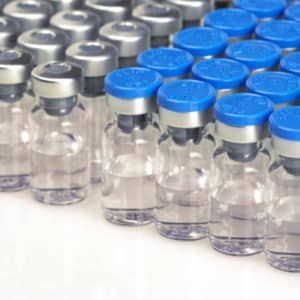- IoT-enabled monitoring systems now provide real-time alerts for temperature, humidity, and handling conditions, sharply reducing excursion risks in pharma airfreight.
- Blockchain platforms enhance end-to-end traceability and compliance, creating secure, tamper-proof custody records across global supply chains.
- AI-driven optimisation tools from players like 7bridges and Expeditors dynamically match shipments with routes, carriers, and dispatch sites, cutting delays and costs.
- Integrated digital ecosystems (Cargo iQ, Hermes, Nallian) unify booking, volumetrics, slot assignment, and visibility into one workflow, improving SLA compliance and reducing errors.
- Certified pharma handling centres with ASRS, zoned cold corridors, robotics, and tarmac-side access (e.g. Swissport’s Cool+Connect) streamline transfers, cut CO₂ by up to 70 percent, and ensure GDP/CEIV standards.
Here are four impactful technological and software advances in pharmaceutical airfreight over the past 18 months. Each represents a significant step forward in addressing key industry challenges while improving efficiency and compliance. The first development tackled the critical issue of maintaining strict temperature controls, introducing advanced IoT-enabled monitoring systems that provide real-time data and alerts throughout the journey. Secondly, enhanced blockchain platforms addressed traceability gaps, ensuring transparency and security across supply chains. Thirdly, predictive analytics tools optimised routing and scheduling, reducing risks of delay. Finally, automated compliance software streamlined documentation processes, minimising human error and ensuring adherence to stringent regulatory standards.
Active container networks
Traditional passive packaging systems rely heavily on dry ice and insulation, risking temperature excursions and offering limited duration and visibility during long haul multimodal routes.
Solution: Suppliers such as Envirotainer, DoKaSch and SkyCell have rolled out fully active container networks equipped with battery powered cooling systems, real time telematics, and alerts. For example, Envirotainer’s expanded RAP e2 network now covers more destinations, offering continuous temperature control without reliance on dry ice; SkyCell’s next generation passive containers now deliver in excess of 160 hours of stable control, matching or outperforming many active units, and have reduced client temperature excursions from circa 10% to almost zero – saving up to 25% in overall cost for clients .
Integrated software ecosystems and supply chain visibility tools
Pharma shippers often face fragmented data platforms, hampering shipment visibility, planning, analytics and compliance with GDP/IATA CEIV standards.
Solution: Platforms like Cargo iQ, Hermes Logistics Technologies and Nallian have built integrated APIs enabling seamless data sharing among booking, volumetrics (e.g. CargoEye), landside management, slot booking, and shipment visibility systems. These collective integrations support door to door care mapping, slot assignment, re icing requests, and real time tracking in one unified workflow, substantially reducing errors and improving operational speed and SLA compliance .
AI driven route, carrier and cost optimisation
Airfreight planning for pharma is vulnerable to volatile demand, last minute changes, capacity limits and escalating costs, while manual routing often fails to meet SLA and risk standards.
Solution: New AI powered platforms (e.g. from 7bridges, AIT Logistics, and Expeditors) now dynamically recommend optimal routes, carriers and dispatch sites based on real time booking, capacity, schedule, cost and regulatory data. These systems auto select the best match per shipment, push immediate tracking updates, and can execute pre emptive routing changes to avoid disruption. As a result, shippers have better predictability, efficiency and cost transparency, while reducing delays and paperwork friction.
Pharma certified handling centres and automated infrastructure
Problem: Handling of pharmaceuticals at airports can be delayed or jeopardised by mixed cargo workflows, lack of consistent cold zones and inefficient lead times during transfer.
Solution: Ground handlers such as Swissport, Cathay Cargo Services and Turkish Cargo have deployed certified pharma centres compliant with IATA CEIV, GDP and MHRA standards. These sites incorporate automated storage and retrieval systems (ASRS), temperature zoned corridors, tarmac side access (e.g. Swissport’s “Cool+Connect”), robotics and even autonomous forklifts. For instance, Swissport’s Cool+Connect reduces lead time by up to three hours, cuts CO2 emissions by up to 70%, and slashes off airport trucking costs by half – all while ensuring stable 2–8°C control and process transparency using digital risk assessment tools such as Validaide.




